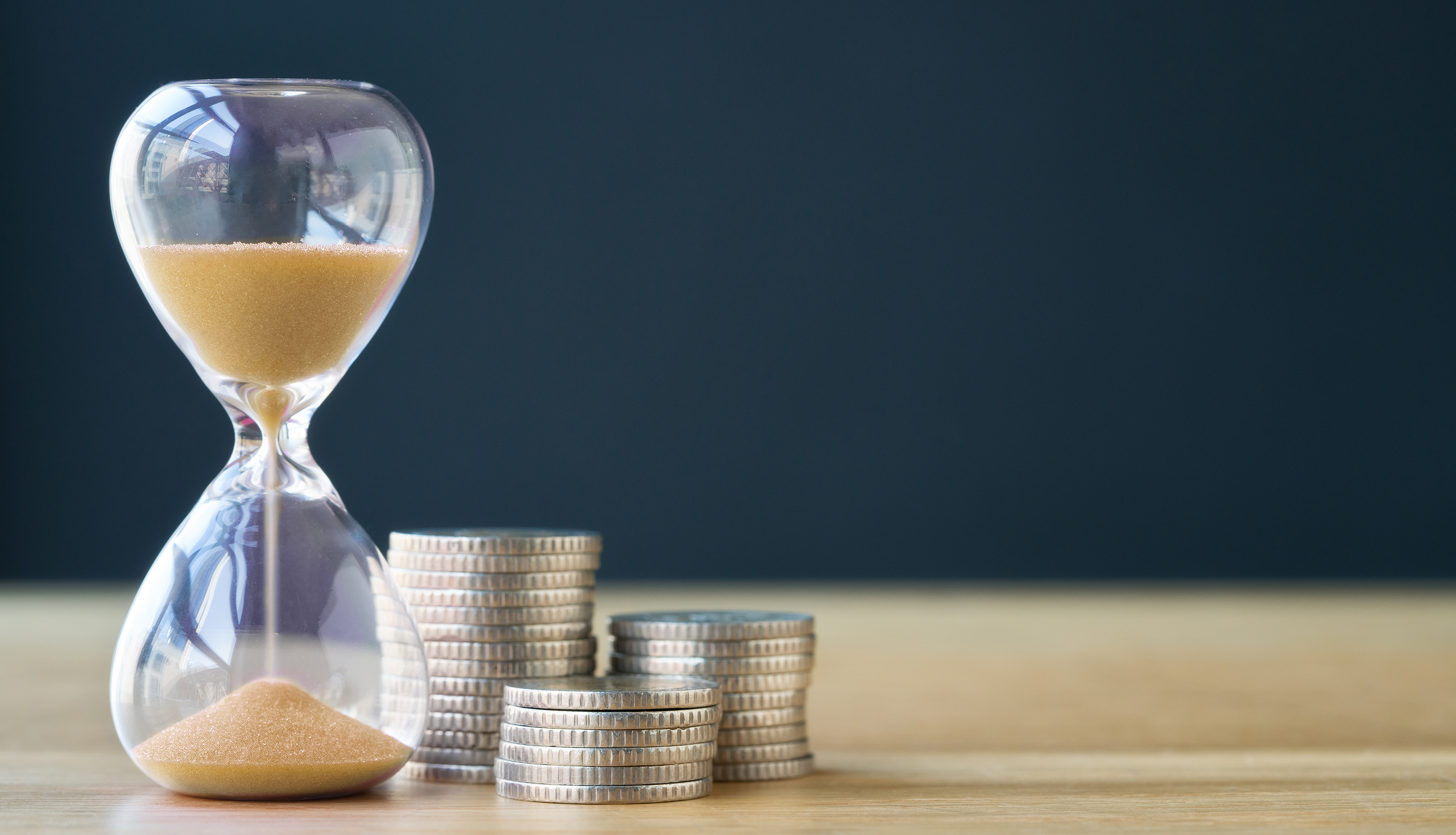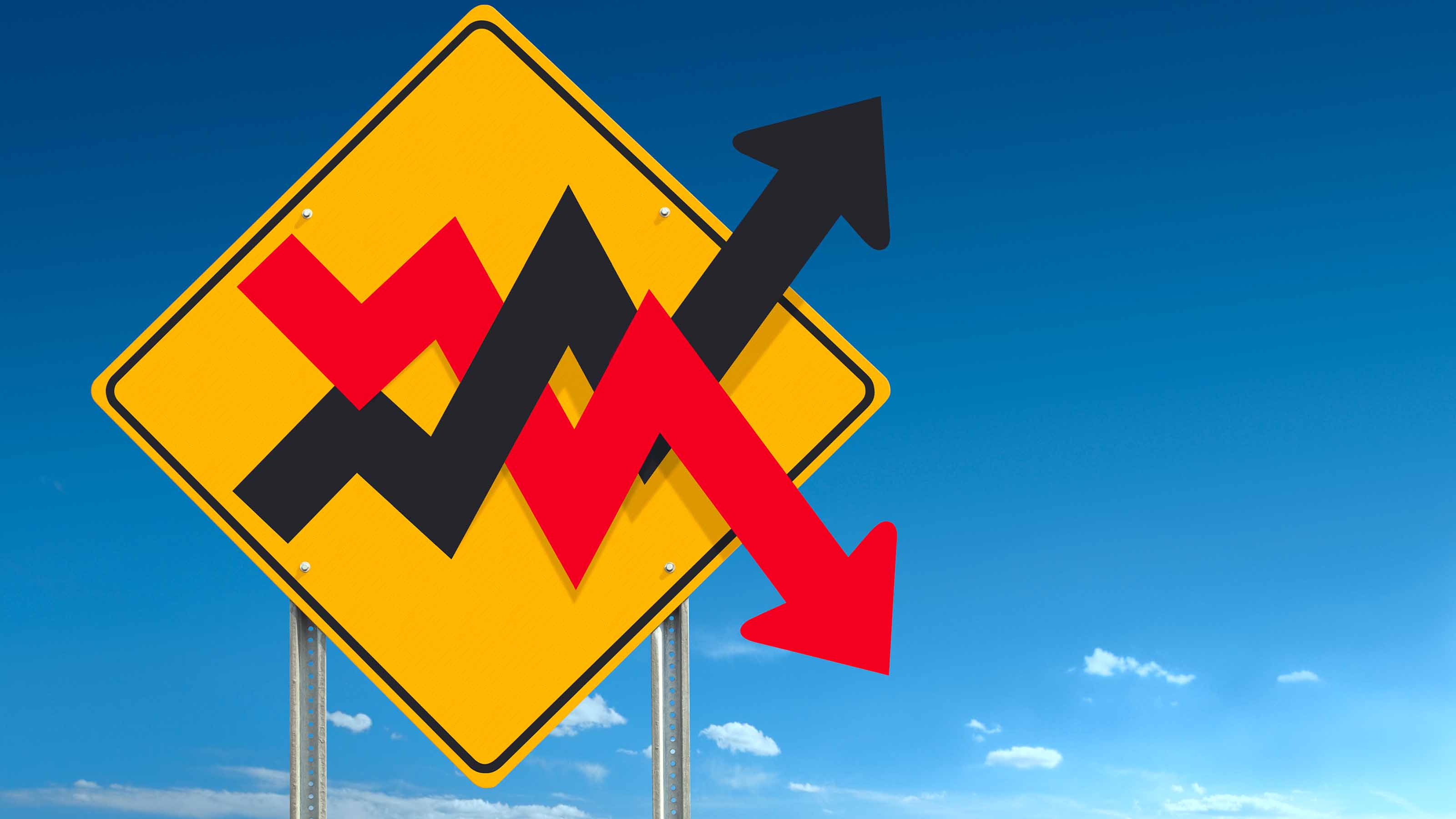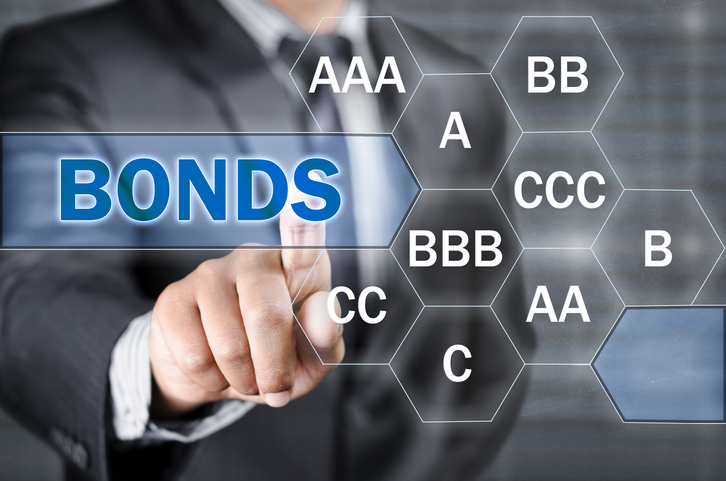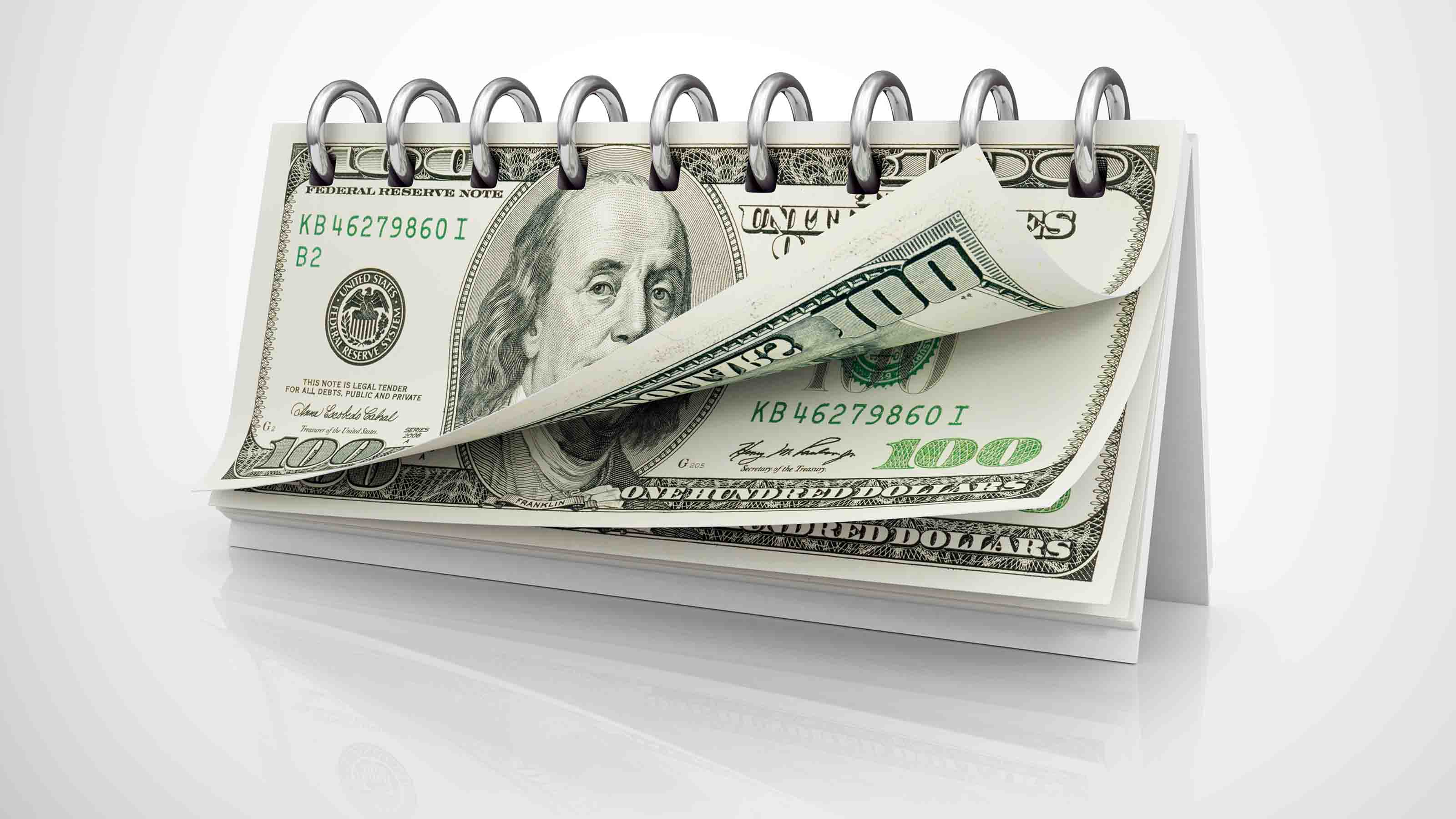Get More Income with My Double-Barreled Investing Strategy
One good company can be twice as nice an investment and get you 36 paydays a year when you buy both its stock and its bonds.

Bonds sure aren’t steals. Prices of many long-term bonds issued by first-rate companies have climbed 15% to 20% over the past two years. By contrast, many blue-chip stocks look cheap on the basis of their price-earnings ratios and dividend yields. Companies can raise the dividends they pay, while the interest they pay on bonds is almost always fixed. And once Congress deals with current income-tax rates, it’s more than likely that taxes on dividends will remain well below levies on bond interest.
On balance, then, blue-chip stocks appear to be better buys than corporate bonds. Of course, stocks typically carry more risk than bonds. If third-quarter earnings are weak and the tone of company comments is negative, stocks will get creamed. Bond prices won’t falter until interest rates start to climb (prices of fixed-income investments move in the opposite direction of yields).
So if you need income and would rather not settle for the puny interest rates offered by government bonds, here’s an idea: Find several companies you understand and admire and are content to stick with through several market and economic cycles. Then buy the shares and the bonds. Figure about $2 worth of stock for each dollar in the company’s bonds. Choose six firms and you’ll book 24 quarterly dividends and 12 semi-annual interest payments a year. That’s potentially a paycheck every ten days. (This is not meant to be an overriding asset-allocation strategy, only a way of hedging your sources of investment income between that generated from bond interest and that derived from a company’s profits.)
From just $107.88 $24.99 for Kiplinger Personal Finance
Become a smarter, better informed investor. Subscribe from just $107.88 $24.99, plus get up to 4 Special Issues

Sign up for Kiplinger’s Free Newsletters
Profit and prosper with the best of expert advice on investing, taxes, retirement, personal finance and more - straight to your e-mail.
Profit and prosper with the best of expert advice - straight to your e-mail.
There is merit to this method. “It’s two different bets,” says Bruce Weininger, a partner in Kovitz Investment Group, a Chicago money-management firm. “With the bond, you’re just hoping the company stays in business. You’re not making any other judgment on how the company’s going to do,” as you do when you own a stock. Weininger frequently holds both a company’s shares and its bonds in client accounts. Two current examples are Johnson & Johnson (stock symbol JNJ) and Wal-Mart Stores (WMT).
Some of the highest-quality corporate bonds pay so little today that they’re hardly worth considering. For example, in mid August, J&J, one of four nonfinancial companies in the U.S. to still have a triple-A debt rating (see Last Four Triple-A Stocks Standing), issued $1 billion of new bonds at 2.95% for ten years and 4.5% for 30 years. That’s hardly more than the U.S. Treasury pays. At the same time, J&J’s stock pays a dividend yield of 3.5%, and payouts have grown at an annualized rate of 10.4% over the past five years. An impeccable credit rating is responsible for both J&J’s stingy bond yield and its bright dividend prospects. Triple-A status keeps borrowing costs down, while giving the company room to pass cash to the shareholders rather than keep it to buttress the balance sheet.
Because they came to market with interest rates well above current yields, many older corporate bonds are trading at premiums to par value. That means you may have to pay, say, $1,150 for a bond that will pay $1,000 at maturity (such a bond would be quoted at $115). You shouldn’t automatically avoid a bond selling at a premium price. The current yields of many such bonds—the interest coupon divided by the purchase price—are quite attractive. As long as inflation and interest rates stay low, the above-market-rate interest coupons of those bonds provide adequate compensation for their higher prices. Just be sure you don’t buy a bond that can be called—that is, redeemed prematurely—in a year or two at face value, because you’ll lose more principal than you will have collected in interest.
I scoured the list of first-rate companies that offer decent-to-above-average dividend yields and have shown a pattern of boosting their payouts regularly. Then, using the continuous real-time corporate-bond trading ticker at www.investinginbonds.com, an incredibly useful free Web site, I hunted for bonds issued by the same companies. All of the companies listed below are investment grade, meaning they are rated triple-B or better. Some issuers, such as AT&T and IBM, have dozens of bonds outstanding. You needn’t insist on the particular issue listed below. Symbols and prices are for the stocks; all prices are as of September 28.
Arcelor Mittal (MT, $33.70)
Multinational steel company headquartered in Luxembourg.
Stock: Yield, 2.3%; five-year dividend growth rate, 13.4%.
Bond: Rating, BBB; an issue maturing in 2020 with a 5.25% interest coupon trades at a current yield and yield to maturity of 5.3%.
AT&T (T, $28.92)
Wireless and traditional phone service.
Stock: Yield, 5.9%; five-year dividend growth rate, 5.5%.
Bond: Rating, A; the 8.125% issue due in 2024 trades at a current yield of 7.6% and a yield to maturity of 7.5%.
Clorox (CLX, $66.61)
Household products.
Stock: Yield, 3.3%; five-year dividend growth rate, 12.7%.
Bond: Rating, BBB+; the 5.95% bond due in 2017 trades at a current yield of 5.0% and a yield to maturity of 3.1%.
CVS Caremark (CVS, $31.61)
Drugstore chain and drug distributor.
Stock: Yield, 1.2%, five-year dividend growth rate, 18.1% (the yield is low, but the dividend growth rate is terrific).
Bond: Rating, BBB+; the 4.75% issue due in 2020 trades at a current yield of 4.5% and a yield to maturity of 3.9%.
Exelon (EXC, $43.09)
Utility with a strong presence in nuclear power plants.
Stock: Yield, 4.9%; five-year dividend growth rate, 10.8%.
Bond: Rating, BBB; the 6.2% issue due in 2017 trades at a current yield of 5.4% and a yield to maturity of 3.6%.
IBM (IBM, $134.65)
Computers and computer services.
Stock: Yield, 2.0%; five-year dividend growth rate, 25.2%.
Bond: Rating, A+; the 5.6% issue due in 2039 trades at a current yield of 4.9% and a yield to maturity of 4.8%.
Kraft Foods (KFT, $31.48)
Food products.
Stock: Yield, 3.7%; five-year dividend growth rate, 8.5%.
Bond: Rating, BBB; the 6.5% bond due in 2040 trades at a current yield of 5.6% and a yield to maturity of 5.4%.
Nucor (NUE, $38.02)
Domestic steel maker.
Stock: Yield, 3.8%, five-year dividend growth rate, 43.1%.
Bond: Rating, A; the 4.125% issue due in 2022 trades at a current yield of 4.1% and a yield to maturity of 4.0%.
Profit and prosper with the best of Kiplinger's advice on investing, taxes, retirement, personal finance and much more. Delivered daily. Enter your email in the box and click Sign Me Up.

Kosnett is the editor of Kiplinger Investing for Income and writes the "Cash in Hand" column for Kiplinger Personal Finance. He is an income-investing expert who covers bonds, real estate investment trusts, oil and gas income deals, dividend stocks and anything else that pays interest and dividends. He joined Kiplinger in 1981 after six years in newspapers, including the Baltimore Sun. He is a 1976 journalism graduate from the Medill School at Northwestern University and completed an executive program at the Carnegie-Mellon University business school in 1978.
-
 The Stoic Retirement: Ancient Wisdom for Today's Reality
The Stoic Retirement: Ancient Wisdom for Today's RealityA "Stoic retirement" doesn't mean depriving yourself. It's a character-based approach to life and aging that can bring calm and clarity.
-
 My Teen Crashed His Car and Now Our Insurance Has Tripled. What Now?
My Teen Crashed His Car and Now Our Insurance Has Tripled. What Now?Dealing with the costly aftermath of a teen car accident is stressful. Here are your options for navigating it.
-
 11 Outrageous Ways To Spend Money in Retirement
11 Outrageous Ways To Spend Money in RetirementWhether you have excess cash to spend or want to pretend, here’s a look at 11 ridiculous ways retirees can splurge.
-
 The Most Tax-Friendly States for Investing in 2025 (Hint: There Are Two)
The Most Tax-Friendly States for Investing in 2025 (Hint: There Are Two)State Taxes Living in one of these places could lower your 2025 investment taxes — especially if you invest in real estate.
-
 The Final Countdown for Retirees with Investment Income
The Final Countdown for Retirees with Investment IncomeRetirement Tax Don’t assume Social Security withholding is enough. Some retirement income may require a quarterly estimated tax payment by the September 15 deadline.
-
 Why Investors Needn't Worry About U.S. Credit Downgrade
Why Investors Needn't Worry About U.S. Credit DowngradeFitch Ratings The United States saw its credit rating downgraded for just the second time in history, but experts aren't worried about the long-term damage to stocks.
-
 Income-Investing Picks for a Recession
Income-Investing Picks for a RecessionInvesting for Income Some consequences of an economic downturn work to the benefit of fixed-income investors. Here are three fund ideas that fit the bill.
-
 Dogs of the Dow Are 2022's Best in Show
Dogs of the Dow Are 2022's Best in Showdividend stocks Some of the best investments for income investors in a volatile 2022 have come from the Dogs of the Dow.
-
 Bond Values in a Volatile Market
Bond Values in a Volatile MarketInvesting for Income While the market's instability may not be over just yet, the latter half of the year should be less daunting – and possibly more rewarding – for investors.
-
 Should You Buy Bonds Now? What To Consider
Should You Buy Bonds Now? What To Considerbonds The fixed-income market has been turned on its head in recent years, but there are still opportunities for those looking to buy bonds again.
-
 Dividend Dates: A Beginner's Guide
Dividend Dates: A Beginner's Guidedividend stocks Everything you need to know about ex-dividend dates, dividend announcements and other parts of the dividend calendar.